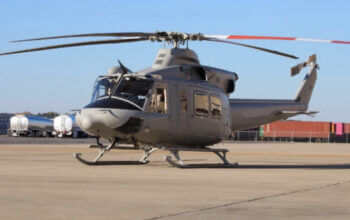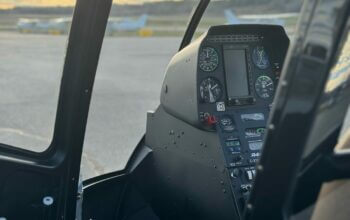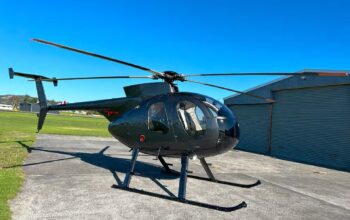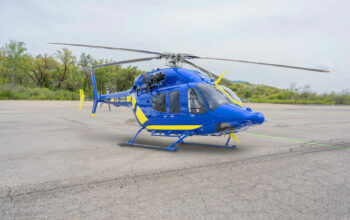Estimated reading time 12 minutes, 32 seconds.
In the world of aerobatics, where precision meets passion, Ryan Chapman stands tall as a testament to unwavering determination and a lifelong love for the skies.
Born and raised in New Zealand, the self-described Kiwi-Canadian says he always knew he wanted to fly, ever since the age of four. “It wasn’t even a question of, ‘Will I do this?’ It was, ‘When am I going to start doing this?’” he told Skies as he sat out front of the hangar at Juergensen Field in Fergus, Ont., where his Staudacher S-300 aerobatic plane is based.
Today, at 35 years old, Chapman has been flying for 23 years – roughly a dozen of which have been dedicated to aerobatics. The road that led him to earning a spot with the Canadian Advanced Aerobatic Team was a long one, and it started with getting his aerobatic rating Down Under.

“I did my training with a really renowned flying school out of Sydney, Australia, called Red Baron . . . and the training was pretty rigorous,” he said. “They also had a very strong competition focus, so it kind of gave me my exposure to competition aerobatics and what was required to fly at a really high level.”
Chapman acknowledged that competition aerobatics is not only a difficult sport to master, but a sport that is difficult to get into. After he saw both success and failure competing in aerobatic competitions in Australia and New Zealand, “it just validated that I definitely want to figure this out,” he recalled.
Putting in the work
It was 2011 when Chapman decided to take a leap with his now wife and move to Canada. “Her family was based here, but it wasn’t the reason why we came,” he said.
“I think Canada has got a lot to offer. . . . I had no plan, just two suitcases and that was it. I knew I wanted to fly, and I knew I wanted to live in Canada.”
When the time came for Aerobatics Canada to select its team of pilots, Chapman was prepared to give it his all. Essentially, pilots who want to try out for the team can participate in either the east coast or west coast competition events, “and it’s the same panel of judges for both,” he explained. “The top five spots are based on scores, and the remaining three spots are chosen by the jury panel. They also select two backup pilots.
“I was fortunate to be number four for the last year based on score,” shared Chapman.
Having already competed in the Canadian National Aerobatic Championships and the U.S. National Aerobatic Championships this year, Chapman is flying the Staudacher S-300 for Team Canada in the World Advanced Aerobatic Championships, being held from Oct. 24 to Nov. 4 in Las Vegas. His aircraft, which was purchased from a pilot in Alberta (though it has a long history in the U.S.), is the only one of its kind in Canada.
“We got it out here, and we did some work to it over the years,” said Chapman. “We overhauled the motor; we got a new prop; we put new hinges on the ailerons to make it more robust; we changed all the hardware out… We basically got it back up to a really high standard because it was like a diamond in the rough.”
Chapman said the Staudacher’s wing design is what “makes the aircraft stand out. It probably corners better than most aerobatic aircraft. It also snap-rolls beautifully, and has a lot of vertical performance. . . . In the right hands, it can be very potent.”
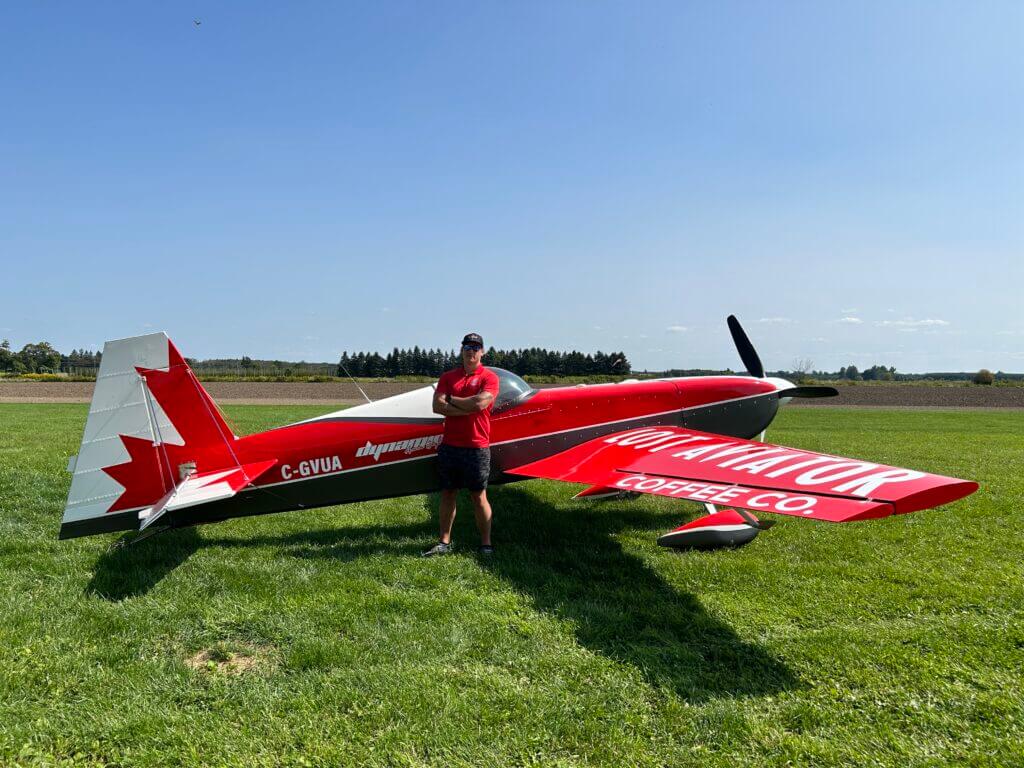
Over the last several months, preparing for Worlds involved rigorous training camps, as well as building a team strategy.
“As much as it’s individual, it’s very much a team event,” explained Chapman. “You’re trying to round out the team and the skill level because what you ultimately want is consistency. As long as everyone does their part, you have very strong contention to win the gold medal.
“The biggest thing at that level, and really any aerobatics competition, is you cannot make a mistake,” he continued, “because one hard zero can completely take you out of contention.”
In competition aerobatics, precision is king. Every manoeuvre is graded starting from 10.0, and the judges make deductions based on a set of criteria in the rule book.
For Chapman, specifically, preparations also involved recovering — both physically and mentally.
Life or death
On April 23, 2023, Chapman survived an engine failure in his Sukhoi Su-26 aircraft — which he had originally planned to fly in this year’s World Aerobatic Championships.
Chapman said the Sukhoi has always been his dream aircraft, and the plan was to fly it in the “unlimited” category — which is the highest category in an aerobatic competition. “My concern with flying the Staudacher in the unlimited category was that I would fly too hard, and I didn’t want to do that to the airplane,” he said.
“This beautiful Sukhoi came up for sale . . . and it was the right time and right price. So, we imported it into the country. After the import, I was doing a flight and everything was fine until it wasn’t; I had the engine surge on me at 1,500 feet.
“My immediate thought was a fuel issue to the engine, so I did all the necessary cause checks and after five to 10 seconds, it was all business; I knew I had to get the plane down,” he continued. “The engine was still making 15 to 20 per cent power, which made things even trickier.”
Chapman had two options for where he could land the plane: a road, or a wet muddy field with powerlines nearby. Initially, he didn’t want to choose the muddy field because he knew the plane would flip on its back. However, the road had several cars on it, and he had committed to a decision of not hurting anyone else.
He headed towards the muddy field at 145 kilometres per hour, pulled the prop lever back to try to float over the powerlines, “then got the nose down and did a three-point landing,” he recalled. “Then physics took over with the dirt being soft, and the plane flipped.”
Chapman said three things saved him that day: the fact that he was wearing a helmet; the fact that the ground was soft and it was not a hard landing; and the fact that he tucked his chin into his chest as he landed — “which changed the force vector. So, instead of it going straight through my spine and compressing it, it actually went through the back of the muscle. What I ended up doing was hyperextending my muscle and the back of my neck.”
Keep moving forward
Chapman says today, his recovery is going well, and it’s like he hasn’t skipped a beat.
“I’m flying well, and my coach is really happy. . . . After the accident I talked to a lot of pilots who I look up to, and I’ve also been working with a sports psychologist; my biggest concern was, ‘Am I processing the accident properly?’
“He told me that the mind is a very complex place and it’s going to take time, but the best thing to do is just try and make that step forward every day. So that’s what I’ve done.”
While he continues to push ahead, Chapman is also in the process of repairing his Sukhoi, which he plans to fly in aerobatic competitions next year.
His story serves as an inspiration to others to always persevere.
Chapman says in the future, he would love to be a mentor to other pilots who are interested in aerobatics, and maybe even start an aerobatics club “where people can come together and share the joys of it — and hopefully lower the barrier to entry.”
Follow Ryan on Instagram @kaha.aerosports


